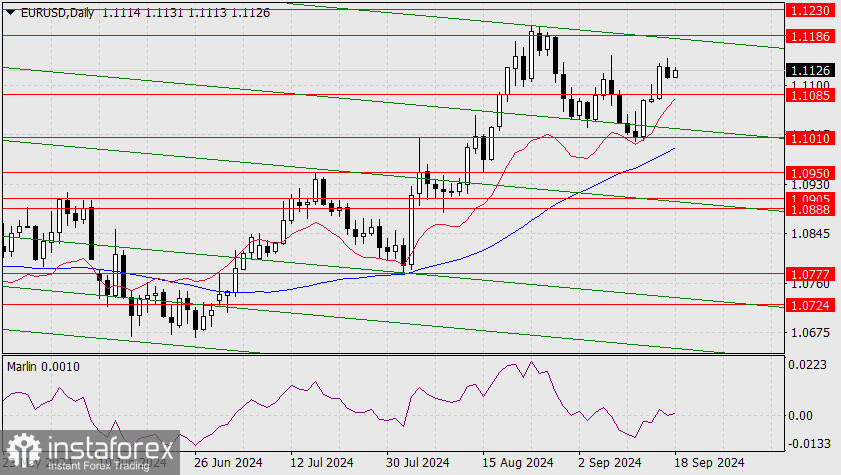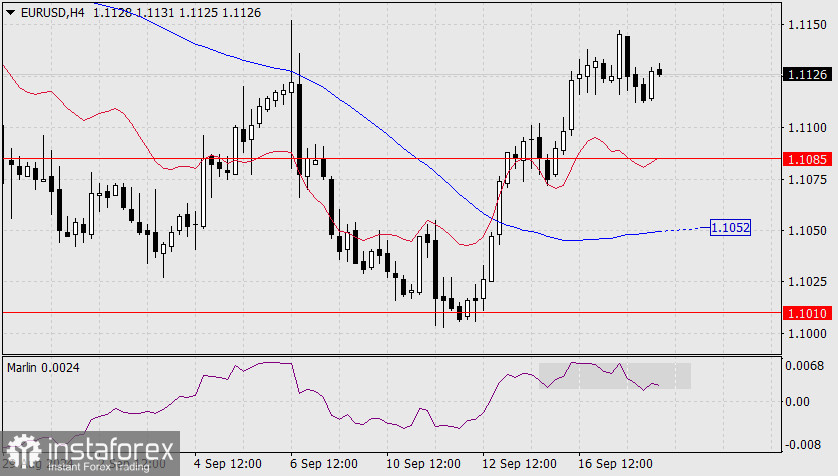Today, the Federal Reserve is expected to lower its interest rate. The markets have approached this event with the following expectations: there is a 36% probability of a 0.25% rate cut and a 64% probability of a 0.50% cut. Earlier, we explained in detail why we anticipate only a quarter-point cut. Now, we are waiting for the euro to reach the strong technical support level at 1.1010—this is the area where the target level from the August 5 high, the embedded line of the green price channel, and the support of the MACD line converge. Breaking this level would send the price into a medium-term decline towards the 1.0724 area.

We also believed the price would consolidate in the 1.1010/85 range, but it has chosen the 1.1085-1.1150 range instead. The difference between these ranges is that, in the current situation, the Marlin oscillator's signal line is at the zero level, whereas if the price were below 1.1085, it would support it. This difference, from a technical standpoint, currently favors growth. However, the main scenario complicates matters, meaning if the price consolidates below 1.1085 as expected, Marlin's recent move into positive territory will turn out to be false, as would the price move above 1.1085. A similar movement occurred on September 5-6. If the Fed lowers the rate by 0.50%, we expect the price to break above 1.1186 and then target 1.1230.

On the four-hour chart, the Marlin oscillator is pushing the lower boundary of its range. This is the only sign of a possible price drop, aside from the hourly time frame, where the price has settled below the MACD line. A move by Marlin into negative territory will increase the pressure on the price and help it reach the support of the MACD line (1.1052). The 1.1085 level now serves as an intermediate level.
 English
English 
 Русский
Русский Bahasa Indonesia
Bahasa Indonesia Bahasa Malay
Bahasa Malay ไทย
ไทย Español
Español Deutsch
Deutsch Български
Български Français
Français Tiếng Việt
Tiếng Việt 中文
中文 বাংলা
বাংলা हिन्दी
हिन्दी Čeština
Čeština Українська
Українська Română
Română

